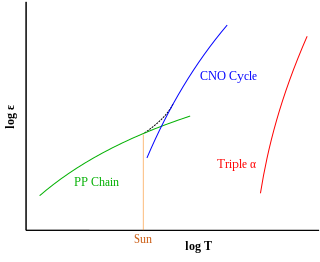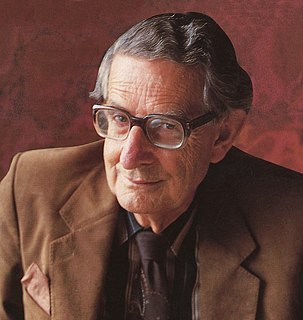| |||||
| Centuries: | |||||
|---|---|---|---|---|---|
| Decades: | |||||
| See also: | 1545 in Denmark List of years in Norway | ||||
Events in the year 1545 in Norway.
| |||||
| Centuries: | |||||
|---|---|---|---|---|---|
| Decades: | |||||
| See also: | 1545 in Denmark List of years in Norway | ||||
Events in the year 1545 in Norway.
| | This section is empty.You can help by adding to it.(July 2010) |

The CNO cycle is one of the two known sets of fusion reactions by which stars convert hydrogen to helium, the other being the proton–proton chain reaction, which is more efficient at the Sun's core temperature. The CNO cycle is hypothesized to be dominant in stars that are more than 1.3 times as massive as the Sun.

Hans Christian Andersen, in Denmark usually called H.C. Andersen, was a Danish author. Although a prolific writer of plays, travelogues, novels, and poems, he is best remembered for his fairy tales.
The MD5 message-digest algorithm is a widely used hash function producing a 128-bit hash value. Although MD5 was initially designed to be used as a cryptographic hash function, it has been found to suffer from extensive vulnerabilities. It can still be used as a checksum to verify data integrity, but only against unintentional corruption. It remains suitable for other non-cryptographic purposes, for example for determining the partition for a particular key in a partitioned database.

The Han dynasty was the second imperial dynasty of China, established by the rebel leader Liu Bang and ruled by the House of Liu. Preceded by the short-lived Qin dynasty and a warring interregnum known as the Chu–Han contention, it was briefly interrupted by the Xin dynasty established by the usurping regent Wang Mang, and was separated into two periods—the Western Han and the Eastern Han (25–220 AD)—before being succeeded by the Three Kingdoms period. Spanning over four centuries, the Han dynasty is considered a golden age in Chinese history, and influenced the identity of the Chinese civilization ever since. Modern China's majority ethnic group refers to themselves as the "Han Chinese", the Sinitic language is known as "Han language", and the written Chinese is referred to as "Han characters".

The Xiongnu were a tribal confederation of nomadic peoples who, according to ancient Chinese sources, inhabited the eastern Eurasian Steppe from the 3rd century BC to the late 1st century AD. Chinese sources report that Modu Chanyu, the supreme leader after 209 BC, founded the Xiongnu Empire.
The Han Chinese, Hanzu, or Han people are an East Asian ethnic group and nation native to China. Historically, they were native to the Yellow River Basin region of modern China. They constitute the world's largest ethnic group, making up about 18% of the global population and consisting of various subgroups speaking distinctive varieties of the Chinese language. The estimated 1.4 billion Han Chinese people are mostly concentrated in mainland China, where they make up about 92% of the total population. In Taiwan, they make up about 97% of the population. People of Han Chinese descent also make up around 75% of the total population of Singapore.

Hans Jürgen Eysenck was a German-born British psychologist who spent his professional career in Great Britain. He is best remembered for his work on intelligence and personality, although he worked on other issues within psychology. At the time of his death, Eysenck was the living psychologist most frequently cited in the peer-reviewed scientific journal literature. A 2019 study found him to be the third most controversial of 55 intelligence researchers.

Legalism or Fajia is one of Sima Tan's six classical schools of thought in Chinese philosophy. Literally meaning "house of administrative methods" or "standards/law", the Fa "school" represents several branches of what have been termed realist statesmen, or "men of methods", who played foundational roles in the construction of the bureaucratic Chinese empire, with their teachings coming to temporary overt power as an ideology with the ascension of the Qin Dynasty. In the Western world, the Fajia has often been compared to Machiavellianism, and considered akin to an ancient Chinese philosophy of Realpolitik, emphasizing a realist project of consolidating the wealth and power of the state and its autocrat, with the goal of achieving order, security and stability. With their close connections to the other schools, some Legalists would go on to be a major influence on Taoism Confucianism, and legalism remains highly influential in administration, policy and legal practice in China today.

Ban Gu was a Chinese historian, politician, and poet best known for his part in compiling the Book of Han, the second of China's 24 dynastic histories. He also wrote a number of fu, a major literary form, part prose and part poetry, which is particularly associated with the Han era. A number of Ban's fu were collected by Xiao Tong in the Wen Xuan.
Richard Rafe Champion de Crespigny, also known as Zhang Leifu, is an Australian sinologist and historian, currently an adjunct professor in the College of Asia and the Pacific at the Australian National University. He specialises in the history, geography, and literature of the Han dynasty, particularly the translation and historiography of material concerning the Han dynasty and the Three Kingdoms period.

The Book of Han or History of the Former Han is a history of China finished in 111, covering the Western, or Former Han dynasty from the first emperor in 206 BCE to the fall of Wang Mang in 23 CE. It is also called the Book of Former Han.
Army Group B was the title of three German Army Groups that saw action during World War II.

Haplogroup M is a human mitochondrial DNA (mtDNA) haplogroup. An enormous haplogroup spanning all the continents, the macro-haplogroup M, like its sibling the macro-haplogroup N, is a descendant of the haplogroup L3.

In human mitochondrial genetics, haplogroup B is a human mitochondrial DNA (mtDNA) haplogroup.
Haplogroup F is a human mitochondrial DNA (mtDNA) haplogroup. The clade is most common in East Asia and Southeast Asia. It has not been found among Native Americans.

Haplogroup O, also known as O-M175, is a human Y-chromosome DNA haplogroup. It is primarily found among populations in Southeast Asia and East Asia. It also is found in various percentages of populations of the Russian Far East, South Asia, Central Asia, Caucasus, Crimea, the Middle East, Oceania, Madagascar, and the Comoros. Haplogroup O is a primary descendant of haplogroup NO-M214.

Haplogroup C-M217, also known as C2, is a Y-chromosome DNA haplogroup. It is the most frequently occurring branch of the wider Haplogroup C (M130). It is found mostly in Central Asia, Eastern Siberia and significant frequencies in parts of East Asia and Southeast Asia including some populations in the Caucasus, Middle East, South Asia. It is found in a much more widespread areas with a low frequency of less than 2%.

The Southward expansion of the Han dynasty was a series of Chinese military campaigns and expeditions in what is now modern Southern China and Northern Vietnam. Military expansion to the south began under the previous Qin dynasty and continued during the Han era. Campaigns were dispatched to conquer the Yue tribes, leading to the annexation of Minyue by the Han in 135 BC and 111 BC, Nanyue in 111 BC, and Dian in 109 BC.

Ayodhya is a legendary city mentioned in the ancient Sanskrit-language texts, including the Ramayana and the Mahabharata. These texts describe it as the capital of the Ikshvaku kings, including Rama.